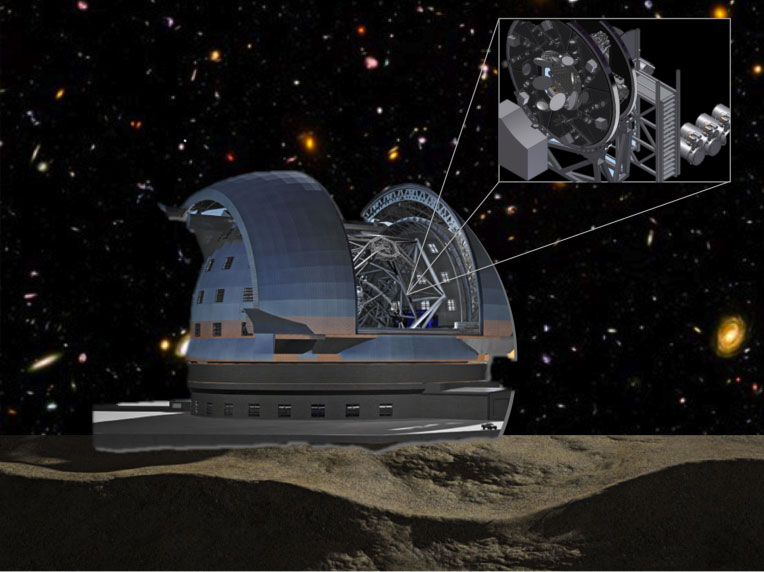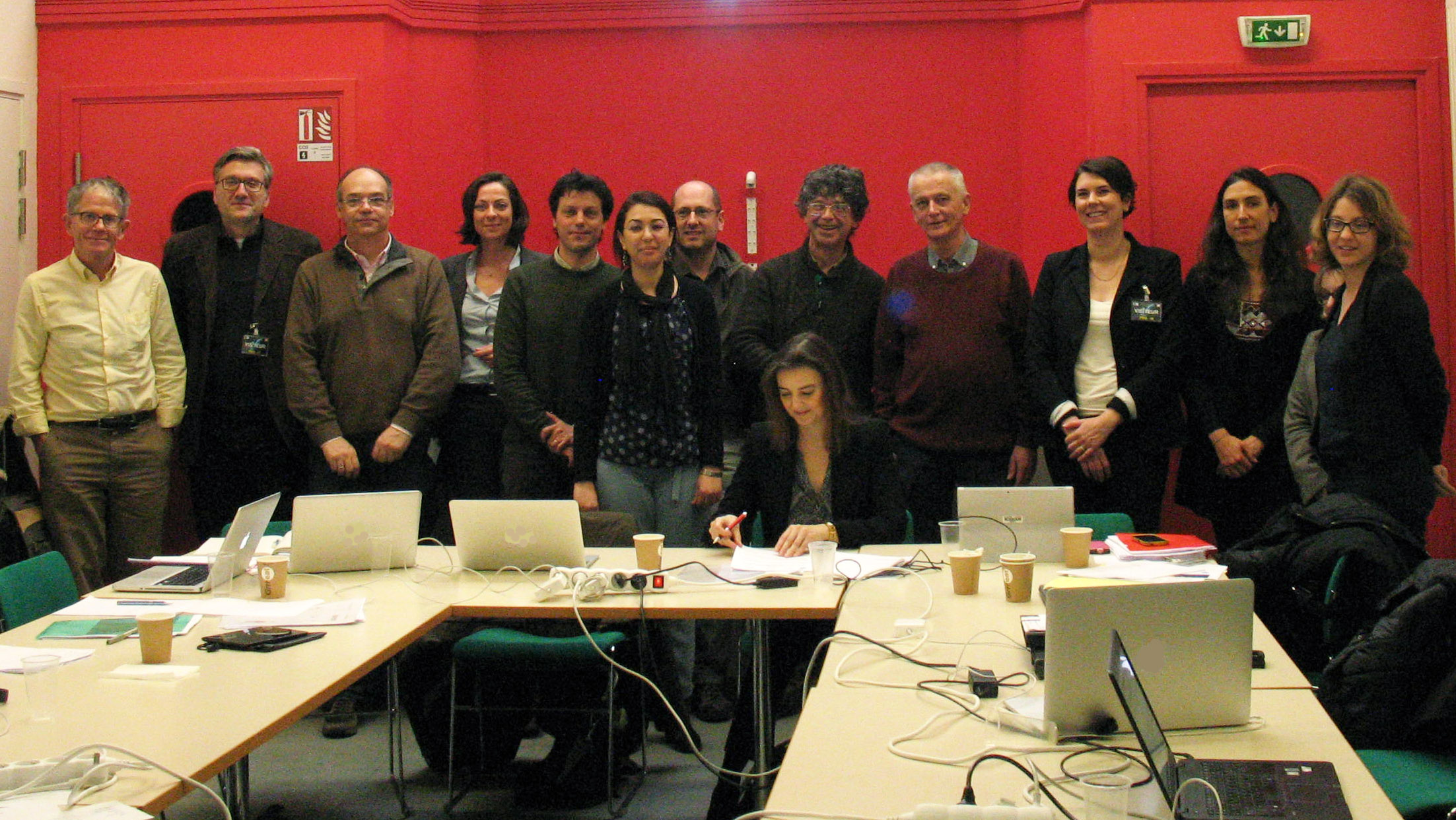On March 18, 2016, during the MOSAIC kick-off meeting at the Paris Observatory in the presence of the team(*) led by François Hammer, The European Southern Observatory has signed a phase A study contract with the MOSAIC consortium. The multi-object spectrograph will be the workhorse instrument for the ELT, being the biggest telescope in the world with its 39m diameter primary mirror. | ||
 MOSAIC will be the world-leading MOS facility, contributing to all fields of contemporary astronomy, from extra-solar planets, to the study of the halo of the Milky Way and its satellites, and from resolved stellar populations in nearby galaxies out to observations of the earliest ‘first-light’ structures in the Universe.
MOSAIC will be the world-leading MOS facility, contributing to all fields of contemporary astronomy, from extra-solar planets, to the study of the halo of the Milky Way and its satellites, and from resolved stellar populations in nearby galaxies out to observations of the earliest ‘first-light’ structures in the Universe.
The ESO contract has been signed by the CNRS-INSU (Leading Institute of the MOSAIC Consortium). The Consortium includes five Leading Countries
- France,
- United Kingdom,
- The Netherlands,
- Brazil,
- Germany,
and six Associated Partners
- Austria,
- Finland,
- Italy,
- Portugal,
- Spain,
- Sweden
 The MOSAIC instrument will combine high multiplex and high spatial resolution to resolve important questions in astronomy and cosmology. It will investigate when the first galaxies are formed and how they aggregate into large galaxies such as the Milky Way. It will study the distribution of the dark and ordinary matter at all scales and age of the Universe. It will reveal important new insight into the physics of galaxies beyond the Local Group, study the Galactic Center and observe the evolution and formation of extra-solar planets.
The MOSAIC instrument will combine high multiplex and high spatial resolution to resolve important questions in astronomy and cosmology. It will investigate when the first galaxies are formed and how they aggregate into large galaxies such as the Milky Way. It will study the distribution of the dark and ordinary matter at all scales and age of the Universe. It will reveal important new insight into the physics of galaxies beyond the Local Group, study the Galactic Center and observe the evolution and formation of extra-solar planets.
(*) The team includes Pascal Jagourel (Observatoire de Paris), Chris Evans (UK-ATC, Edinburgh), Mathieu Puech (Observatoire de Paris), Gavin Dalton (STFC-RALSPACE & Oxford Univ.), Myriam Rodrigues (Observatoire de Paris), Ewan Fitzsimons (STFC-UK-ATC, Edinburgh), Simon Morris (Durham Univ.), Beatriz Barbuy (IAG, Sao Paulo), Jean-Gabriel Cuby (LAM, Marseille), Lex Kaper (Amsterdam Univ.), Martin Roth (AIP, Potsdam), Gerard Rousset (Observatoire de Paris), Richard Myers (Durham Univ.), Olivier Le Fèvre (LAM, Marseille), Alexis Finogenov (Helsinki Univ.), Bruno Castilho (LNA, Itajuba), Goran Ostlin (Stockholm Univ.), Jesus Gallego (Madrid, Computense Univ.), Fabrizio Fiore (INAF-Osservatorio Astronomico di Roma), Bodo Ziegler (Vienna Univ.), Jose Afonso (IA, Lisbon Univ.), Marc Dubbledam (Durham Univ.), Phil Parr Burman (STFC-UK-ATC), Tim Morris (Durham Univ.), Tristan Buey (Observatoire de Paris), Fanny Chemla (Observatoire de Paris), Eric Gendron (Observatoire de Paris), Andreas Kelz (AIP, Potsdam), Isabelle Guinouard (Observatoire de Paris), Ian Lewis (Oxford Univ.), Kevin Middleton (STFC-RALSPACE, Oxford), Ramon Navarro (NOVA), Marie Larrieu (IRAP, Toulouse), Thierry Contini (IRAP, Toulouse), Kjetil Dohlen (LAM, Marseille), Niklas Harald (Goettingen Univ.), Sylvestre Taburet (Observatoire de Paris), Yanbin Yang (Observatoire de Paris), Fatima Defrondat (Observatoire de Paris), Kacem El Hadi (LAM, Aix-Marseille University).
